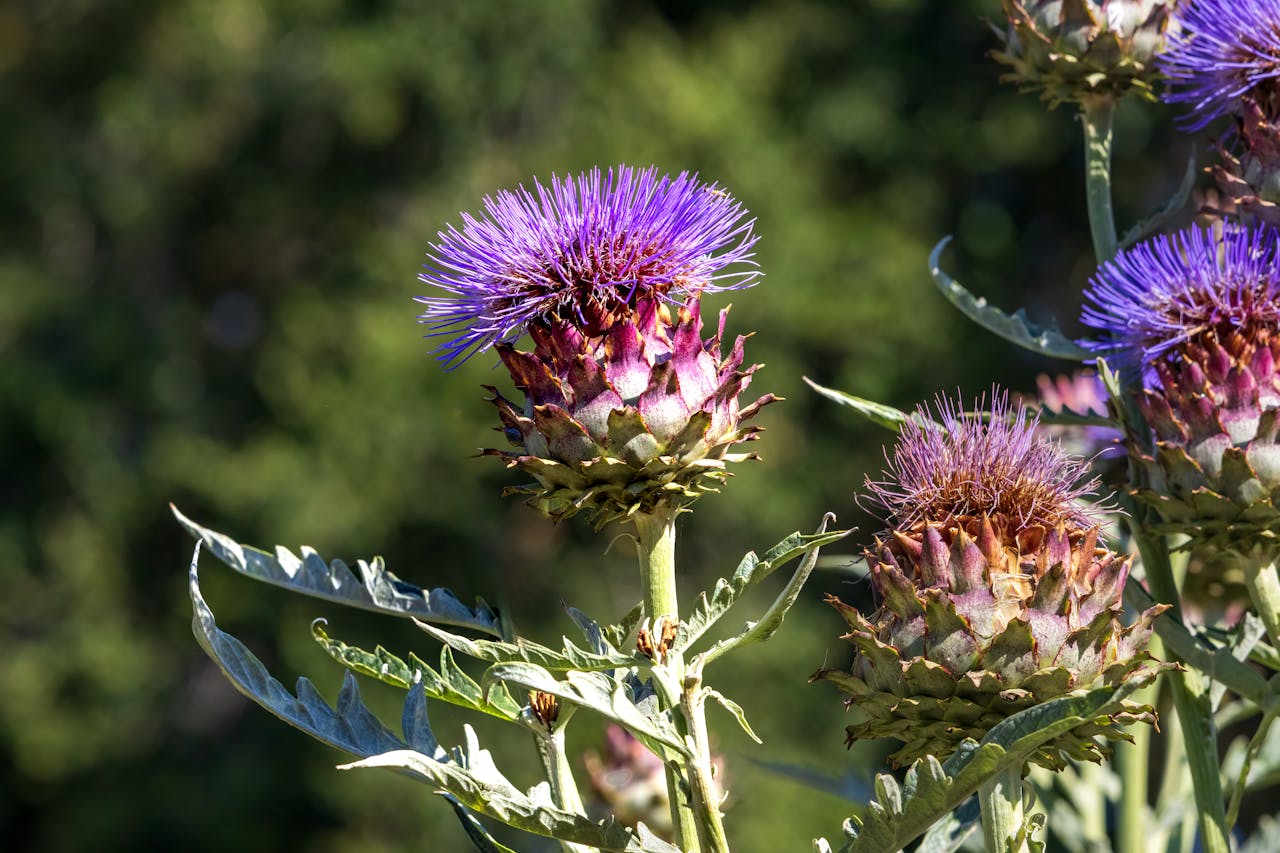
Photo by David Brown
Description of the Carlina corymbosa Plant
Carlina corymbosa is a species of thistle that belongs to the Asteraceae family. It is a perennial plant that naturally grows in the mountainous regions of southern Europe, including the Alps and Pyrenees. The plant has an erect, branched stem that can reach heights of up to 50 centimeters. Its flowers are white in color, with a yellow central disc, and are arranged in a corymb, a type of inflorescence in which all flowers are at the same height.
What really makes this plant special is its ability to cool down on hot summer days. While most plants heat up along with the surrounding air, Carlina corymbosa has the ability to keep the temperature of its flowers much below the surrounding air temperature. This thermoregulation phenomenon is so efficient that the plant's flowers can be up to 10 degrees Celsius cooler than the surrounding air during the day.
The Cooling Mechanism of Carlina corymbosa
Carlina corymbosa has developed an impressive thermoregulation mechanism that allows it to cool down on hot summer days. This process is possible thanks to the unique structure of its flowers. The flowers are arranged in a corymb, a type of inflorescence in which all flowers are at the same height. This structure allows for efficient air circulation, which helps cool the flowers.
In addition, the plant uses water evaporation to cool down. During the day, when the sun is at its zenith and the air temperature is at its highest, the plant transpires water through stomata, the small openings on the surface of the leaves. Water evaporation consumes heat, which leads to the cooling of the plant. This process is similar to how sweating cools our body on hot days.
These findings were made following detailed research, which involved measuring the temperature of Carlina corymbosa flowers at different times of the day and under different temperature conditions. Researchers used infrared thermometers to measure the temperature of the flowers and compared these measurements with the surrounding air temperature. The results showed that, despite the intense heat of the air, the flowers of Carlina corymbosa remained significantly cooler.
Through these mechanisms, Carlina corymbosa can keep the temperature of its flowers up to 10 degrees Celsius cooler than the surrounding air during the day.
Implications and Significance of the Cooling Mechanism of Carlina corymbosa
The ability of Carlina corymbosa to cool down on hot summer days has significant implications both for the plant itself and for understanding plant adaptations to climate change.
For Carlina corymbosa, this cooling mechanism may be essential for its survival in its natural habitat, where temperatures can reach extreme values during the summer. By maintaining a lower temperature, the plant can prevent heat-induced tissue damage and can continue to function efficiently even on the hottest days.
From the broader perspective of science, the discovery of this thermoregulation mechanism in a plant opens up new possibilities for understanding how plants adapt to climate change. This could have implications for the development of plant conservation strategies in the face of global warming and could provide valuable clues for improving crop heat resistance.
Conclusion
Carlina corymbosa is a remarkable example of adaptation to extreme environmental conditions. By developing an efficient thermoregulation mechanism, this thistle plant can survive and thrive on hot summer days, when other plants might suffer. The discovery of this cooling mechanism not only gives us a new perspective on the diversity and complexity of plant life, but could also have important implications for understanding plant adaptations to climate change and for developing plant conservation strategies in the face of global warming. This is a fascinating and promising field of research, waiting for us to explore further.